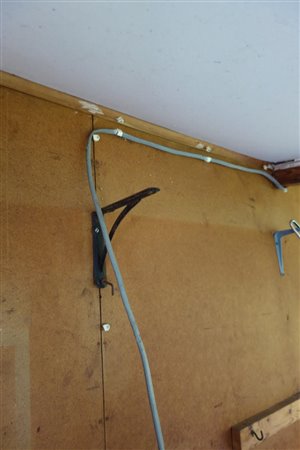Hi,
I’ve just had an EICR done last week, One item I do not understand and would need an electrician or someone to help please. the EICR report says “MISSING TRUNKING WITH WIRES NOT SUPPORTED C2 SHED.” The cable is clipped on the wood wall in the shed. There are no exposed wires. And the shed is not on escape routes. Does cable need to be in trunking in order to comply with the electrical wire regulation? Is the code 2 correct for this situation? please see photo.
Thank you for help

